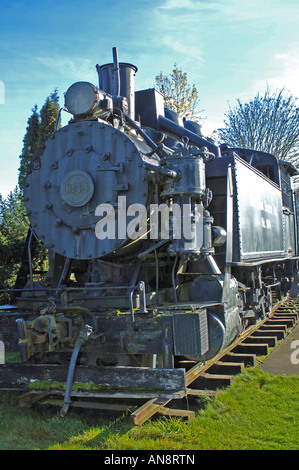

Its 0-6-6-0 Mallet and building on its initial five examples, the Great Northern further improved the design byĪdding a foreword pilot truck, for better stability, and a rear truck to Seeing what the B&O had accomplished with Railroads, particularly those operating in mountainous regions, found it very beneficial over the standard heavy-hauler of the day, the Consolidation (a 2-8-0 design).įor instance, B&O's 0-6-6-0 could produce 50% more tractive effort than a Consolidation making it ideal for heavy freight service. The Mallet Type was essentially two engines housed under one frame and this, coupled with its six or more sets of axles, allowed it to produce awesome levels of adhesion and horsepower thanks to its compound design. The Mallet receives its name from the person who invented it, Anatole Mallet of Switzerland. However, not all are true Mallets as not all utilize compound steam for locomotion. The Mallet Type (pronounced “Ma-lay”) is often a name mistakenly given to all articulated steam locomotives. Reduce the number of units needed to handle a single freight train. " Old Maude" and capable of producing 71,500 pounds of tractiveĮconomies of scale by building larger and more powerful locomotives to

This locomotive was affectionately known as The inspiration for the 2-6-6-2 actually cameįrom the very first Mallet steamer ever operated in the United States inġ904, Baltimore & Ohio 0-6-6-0 #2400, built by the American This updated design was better suited for main line operation.
#Logger steam train drivers#
They proved satisfactory but Great Northern's later 2-6-6-2's featured the firebox behind the drivers and supported by the trailing truck. They were largely a basic 0-6-6-0 with single axle near the pilot and another just beneath the cab. These were given road numbers 1800-1804 (later 1900-1904) and used in the GN's mountainous territory within the Cascade Range of western Washington State. The first 2-6-6-2s to appear in service was a group of five that Baldwin manufactured for the Great Northern between July and September, 1905. The three other units currently running include: Rayonier (Weyerhaeuser) 2-6-6-2T #110 on the Black Hills Central, Weyerhaeuser 2-6-6-2T #108 also on the Black Hills Central, and Clover Valley 2-6-6-2T #4 at the Niles Canyon Railway.Ī Brief History Of The 2-6-6-2 Arrangement She was returned to service in late 2021. There are currently four in operation, the most of which is Chesapeake & Ohio 2-6-6-2 #1309, a Class H-6 that masquerades as Western Maryland Scenic #1309.
It is generally described as simply a "Mallet Mogul." Nevertheless, it was rugged, utilitarian design that was quite successful in a verity of roles. Interestingly, despite its widespread use the wheel arrangement never received a common nickname like most others. & Western to handling heavy log trains on Clover Valley Lumber, Weyerhaeuser Timber, Long Bell Lumber, Clemons Logging, and others. It saw use in a wide range of service, from hauling coal drags on roads like the Clinchfield, Chesapeake & Ohio, and Norfolk This video like the others is a piece of American railroading history.The 2-6-6-2 wheel arrangement was well-liked for its ability to lug heavy loads at slow speeds and was manufactured in a variety of sizes depending on need. Laing not only preserved these images, but he also purchased engine #70, a 2-8-0, which is seen on a freight train being towed to a new home.
#Logger steam train tv#
There is coverage of the ceremonial last steam runs, and even a run of engine 90 on a special run for a TV crew. Laing has some very good footage here which includes operations in 19. In addition we are treated to 2-8-2 #90 in operation, and see some scenes at Railroad Camp, which was the engine facility for the steam locomotives. Two of them are seen on log trains including #14 and ex-Sierra Railway #38. The Rayonier mainline was 45 miles long, and featured several serviceable engines including articulated 2-6-6-2's. Maynard Laing ventured to Washington's Olympic Penninsula to capture the end of an era, with steam locomotives working the forests hauling out fresh log trains to the mill. Click to enlarge Note: Cover image may differ from actual product


 0 kommentar(er)
0 kommentar(er)
